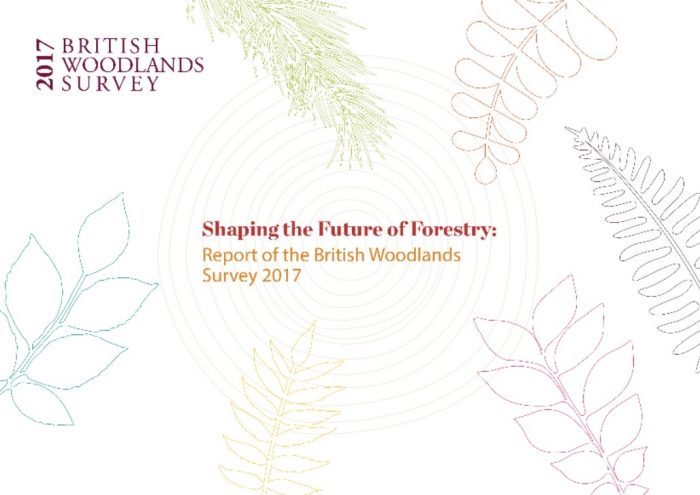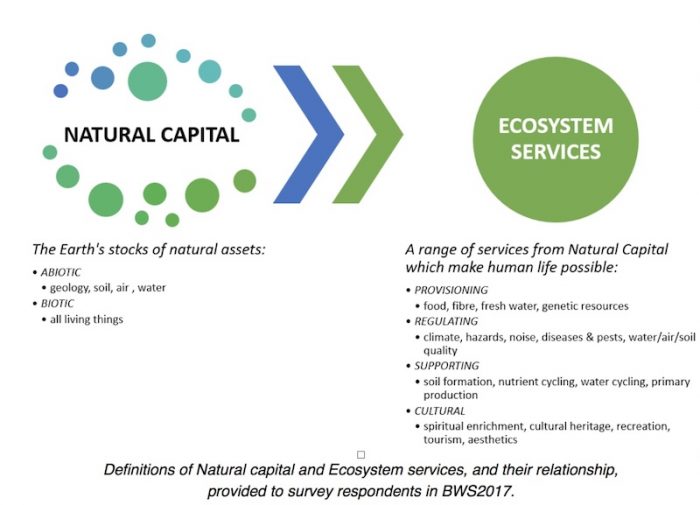Payment for what . . ?

Gabriel Hemery, Chief Executive of Sylva Foundation and lead author of the British Woodlands Survey 2017, provides some insights into the perceived murky world of payment for ecosystem services.
Some readers may be aware of the recent publication of a report for the British Woodlands Survey 2017 (BWS2017). Over the last two years I’ve led a collaborative group of researchers from Sylva Foundation, Forest Research, Woodland Trust, and Oxford University in seeking to gain deeper understanding of awareness, actions and aspirations among woodland owners and agents, forestry professionals, businesses, and others with a stake in the future of forestry in the UK.

One of the novel approaches we undertook in this survey was to ask people what we should be asking them, before we started with the main survey! This resulted in a suite of 17 themes, which were ranked by priority, at UK level, and for England, Scotland, and Wales. The researchers were surprised by the top-ranking theme that emerged: ‘Societal Attitudes’. It reveals perhaps an emerging sense among landowners that they are evermore scrutinised by the public. This perception may also have been influenced by ideas emerging from Defra concerning future support for landowners, post-Brexit and post-CAP, which is increasingly talking about ‘public money for public good’.
Among the top ten themes, ranked 6th, was ‘Natural Capital’, including issues related to payment for ecosystem services. During a series for four country-based workshops we attempted to tease this theme apart before we launched the main survey. It soon became apparent that stakeholders thought this was an important issue but were not always entirely sure what the terms mean, often perceiving them as ‘government speak’ rather than meaningful opportunities to earn income and deliver public good. When it came to designing the survey, in an attempt to qualify awareness and understanding among prospective respondents to the survey, we decided to provide definitions of the two terms and their relationship (see Figure below).

Results of questions about natural capital in BWS2017
- Among the 830 respondents to a question about definitions, 60% told us that these definitions did not alter their understanding of the terms (22% Yes; and 18% Unsure).
- A large majority (87%) of those who stated they were woodland owners reported that they thought their land provides valuable ecosystem services (3% No; and 10% Unsure).
- Respondents were asked whether they thought they should be paid to provide these services: among 560 responses received 42% answered Yes, (27% No; and 31% Unsure).
- We asked owners and agents whether they knew the economic value of their land for any of the following ecosystem services: pollination; soil erosion protection; water flow regulation; cultural; carbon storage/sequestration; and recreation. In all cases, the majority of respondents did not know or were uncertain (range 76-85%).
- Finally, respondents were further asked whether they were willing to enter into a binding contract to provide ecosystem services in return for an income. Of the 589 respondents, 37% answered Yes (20% No, and 43% Uncertain).
Looking forward
The Sylva Foundation team are working behind the scenes on a number of projects which directly relate to natural capital and payment for ecosystem services. One of these is NaturEtrade which aims to overcome market failures which have resulted in the degradation of natural capital and associated ecosystem services. It aims ultimately to be an easy-to-use ecosystem service evaluation tool and trading platform. It’s development has been supported by the EU’s LIFE+ program. The intention is that will help landowners to measure the ecosystem services provided by their land, while beneficiaries of ecosystem services will be able to contract with landowners for the continued and enhanced provision of these services. The full site is not yet available but you can read more and follow progress at: www.naturetrade.net .
One relevant scheme, which may be of immediate interest to woodland owners, is the Woodland Star Rating. It’s a self-assessment scheme based on the UK Forestry Standard (UKFS) aiming to make more people aware of the UKFS, encourage sustainable forest management in all woodlands. Sylva also hopes it may help promote greater understanding of good woodland stewardship among the general public. Completing the scheme could act as a stepping stone towards producing a UKFS-compliant management plan, and for those owners with an existing plan, it may help them communicate the standard of their stewardship to the public and others. Find out more at: www.sylva.org.uk/myforest/wsr
The British Woodlands Survey report for 2017 is available at: www.sylva.org.uk/bws
Comments are closed for this post.
